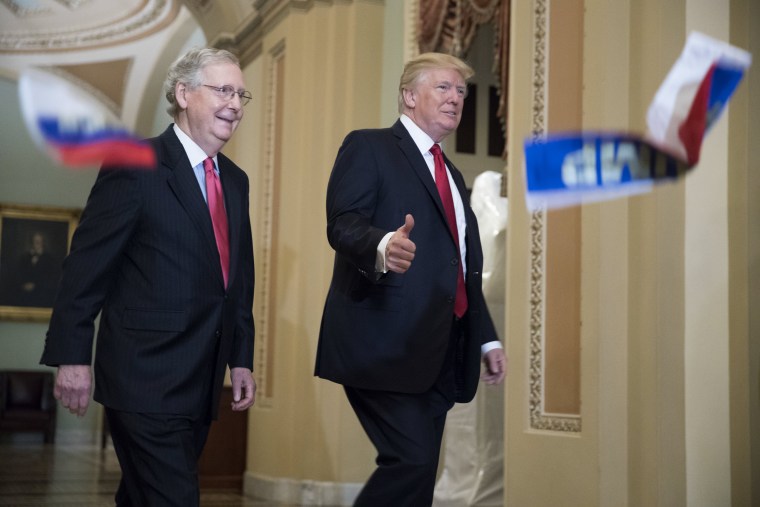About a week before the House approved two articles of impeachment against Donald Trump, Senate Majority Leader Mitch McConnell (R-Ky.) was making plans for a trial in his chamber. He knew that senators would soon have to "solemnly swear" to do "impartial justice," but the Republican leader had an entirely different approach in mind.
Indeed, McConnell made no effort to appear impartial or even hide his strategy. On the contrary, he made his intentions plain, declaring on Fox News that he'd be in "total coordination" with Team Trump as the process unfolded. The Senate GOP leader added that "everything" he intended to do during the proceedings would be coordinated with the White House, assuring Fox News' audience that there would be "no difference between the president's position and our position as to how to handle this."
The comments sparked some bipartisan pushback, which McConnell ignored, but lurking in the backdrop was a practical question: what exactly would "total coordination" between the Republican leadership and Team Trump look like? Specifically, what would the Kentucky senator do to ensure the agreed upon outcome?
We're now getting a better sense of how the work unfolded behind the scenes. The Wall Street Journal reported over the weekend, for example:
Senate Majority Leader Mitch McConnell (R. Ky.), aided by White House liaisons, exercised a behind-the-scenes campaign in the chamber to keep his members from panicking and breaking en masse from Mr. Trump. Mr. McConnell's office even advised the president's legal team throughout the process on which arguments were important to be made on the floor to resonate with certain undecided senators.
It's almost as if "impartial justice" wasn't a serious priority for the Senate's Republican leader.
The Washington Post had a related report, noting that another key element to McConnell's strategy was convincing Donald Trump to get out of the way.
...McConnell was working to ensure Trump and the White House trusted him to handle the trial strategy as he dealt with a mercurial president who had his own ideas about the proceedings. In one phone call shortly before Christmas, McConnell bluntly told Trump that while the president was getting a lot of feedback about how the trial should be conducted, he knew the Senate better than anybody who had been advising the president and, most importantly, how to make his members comfortable.McConnell told Trump that he needed to trust him, according to a person familiar with the conversations who spoke on the condition of anonymity to talk frankly. Trump responded that he did.The administration mostly left the wavering senators alone -- namely out of McConnell's insistence. He warned Trump in the fall not to alienate moderates lest he make the situation worse, according to Republicans.
NBC News added on Friday night, "McConnell called President Trump before he introduced the resolution establishing a final vote on the articles of impeachment on Wednesday. They discussed the details and the president signed off."
And this, evidently, is what "total coordination" was all about: a partnership between McConnell and Trump, as if the president were, for all intents and purposes, a co-member of the Senate GOP leadership.
